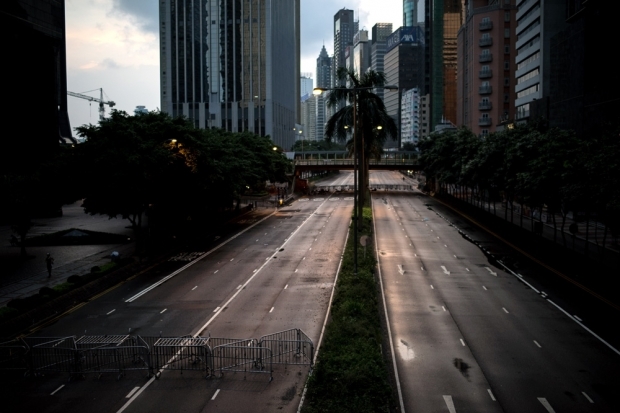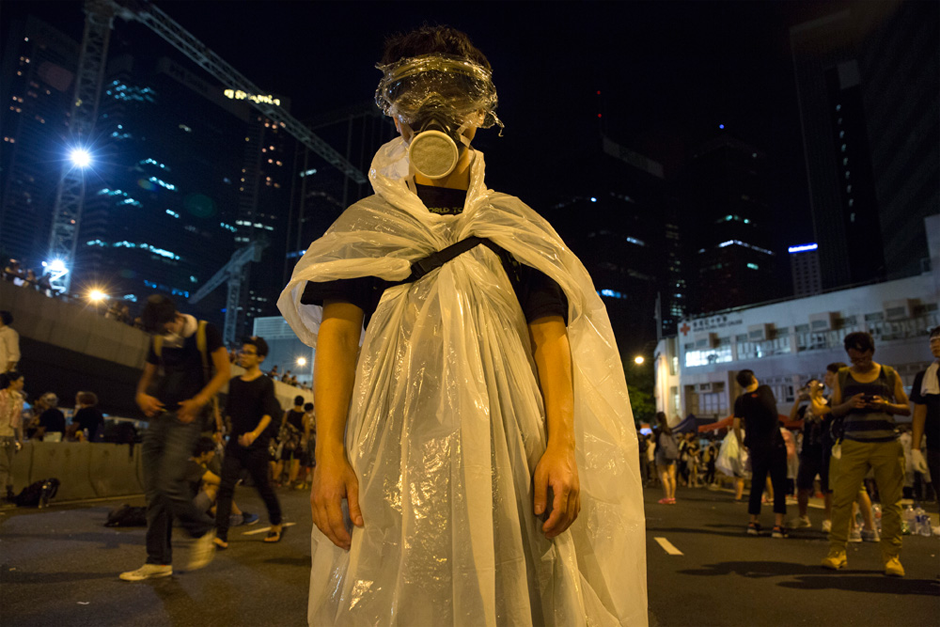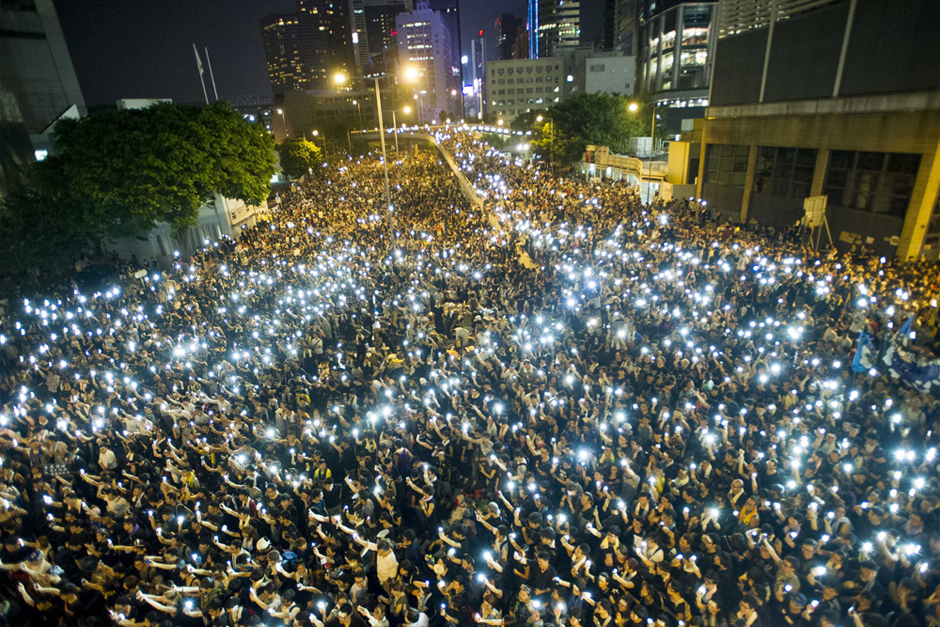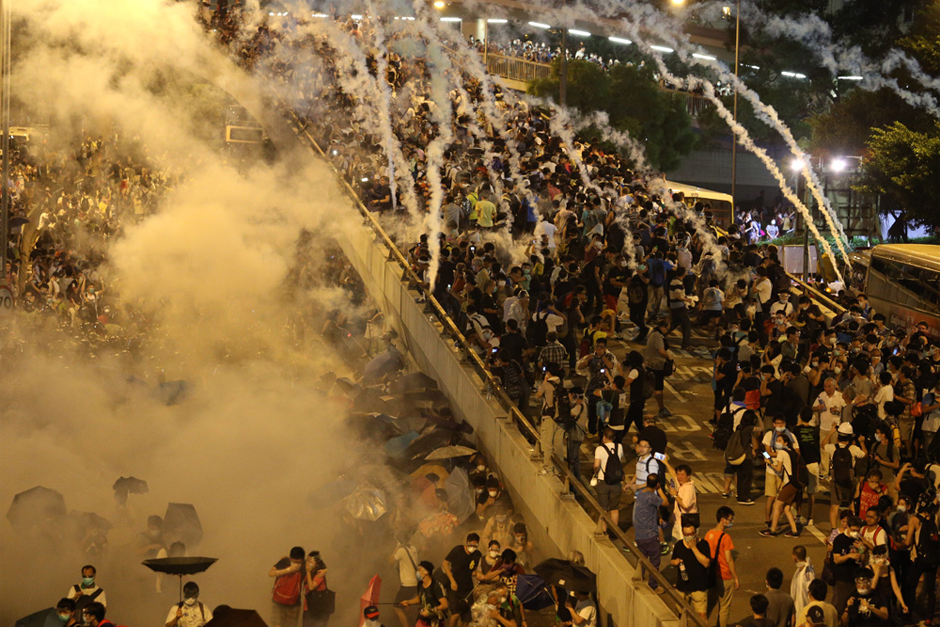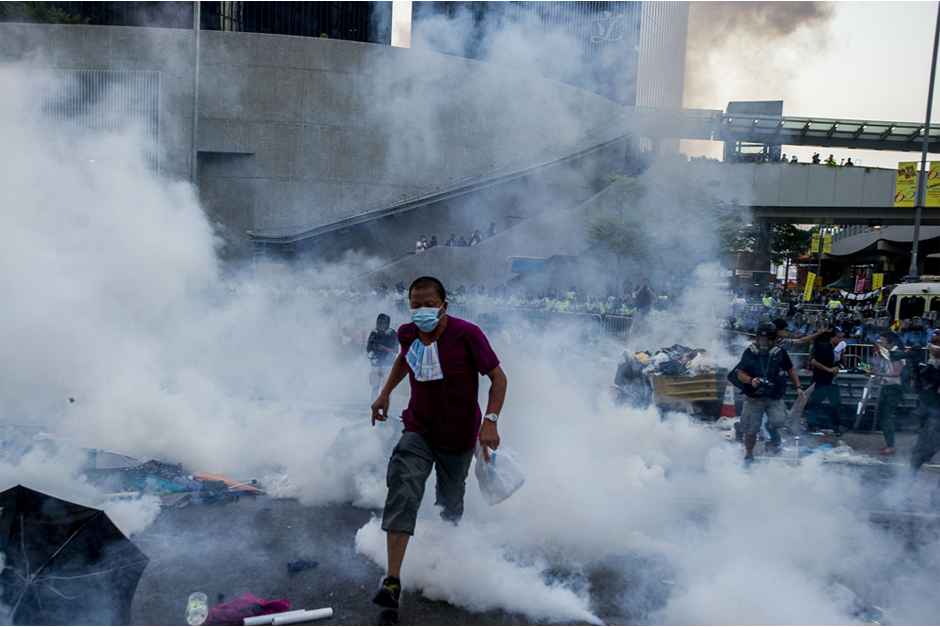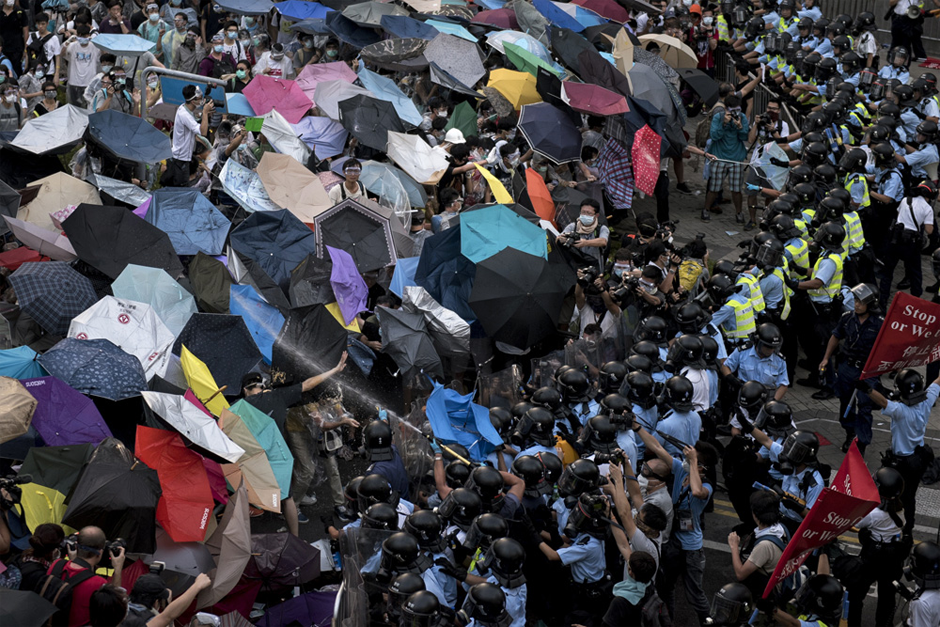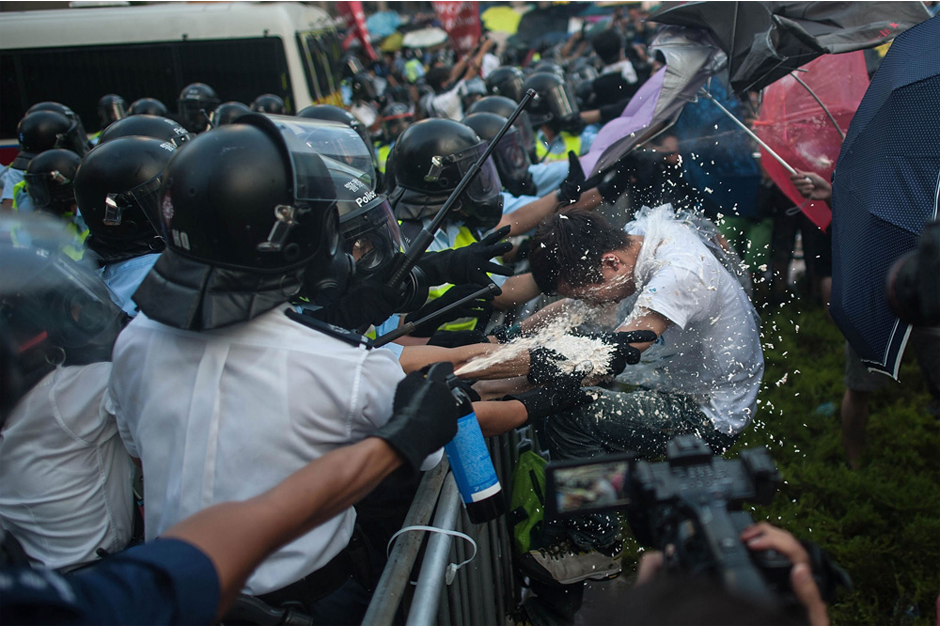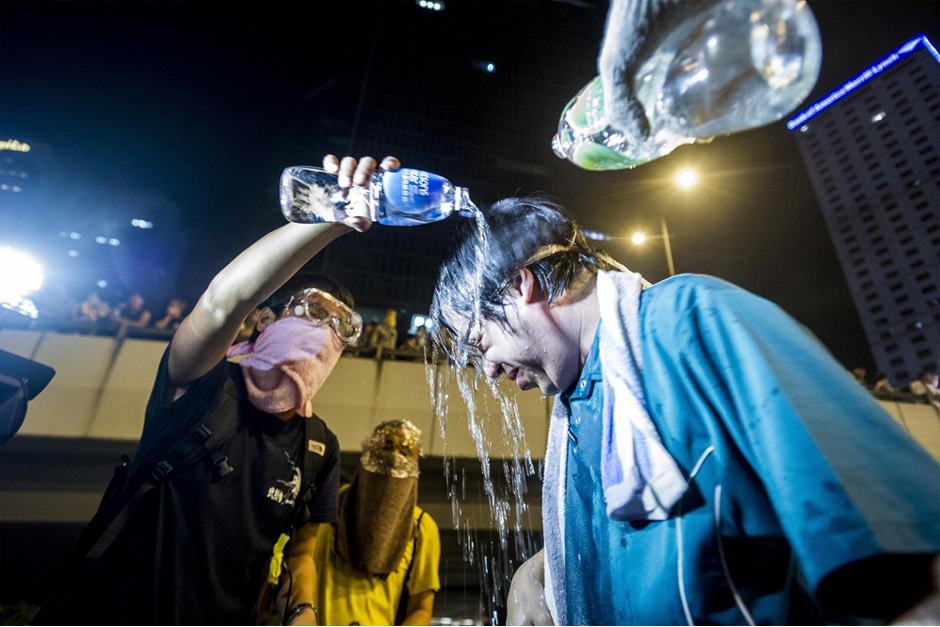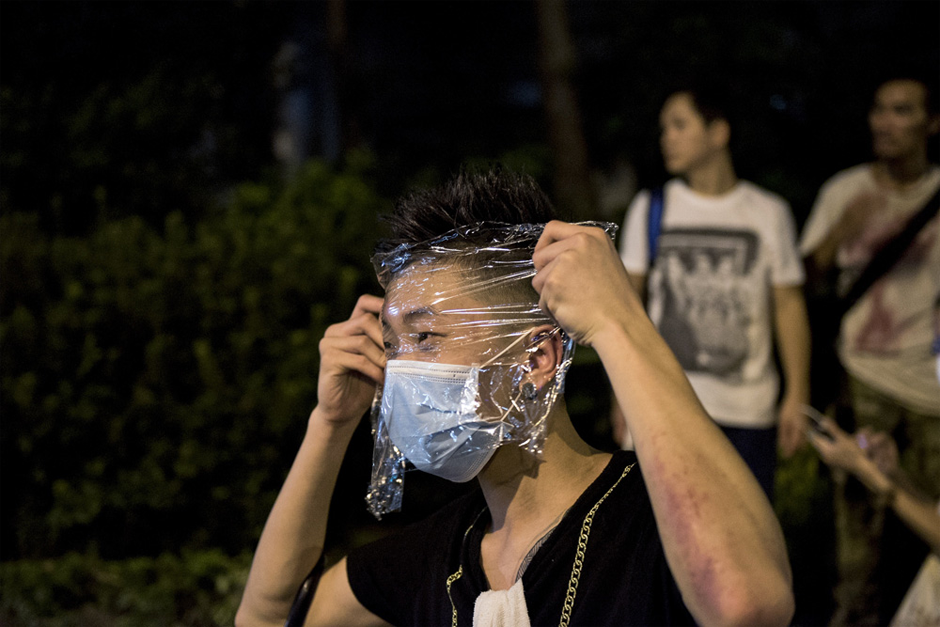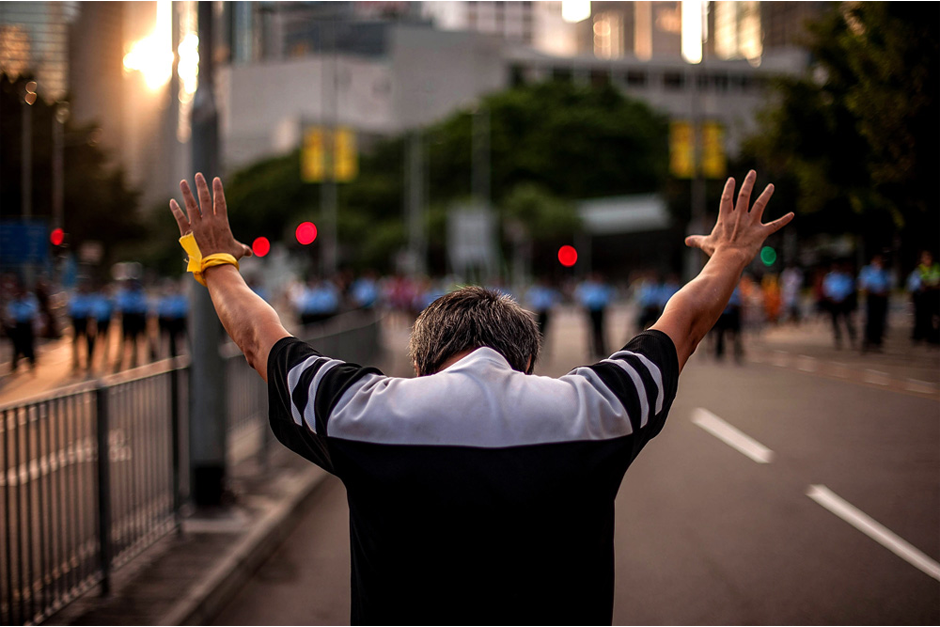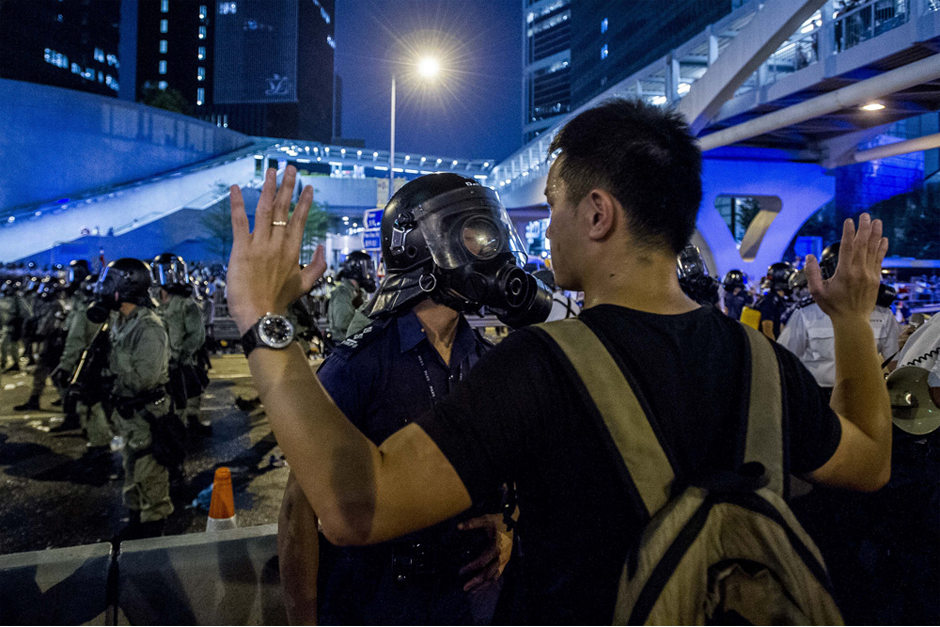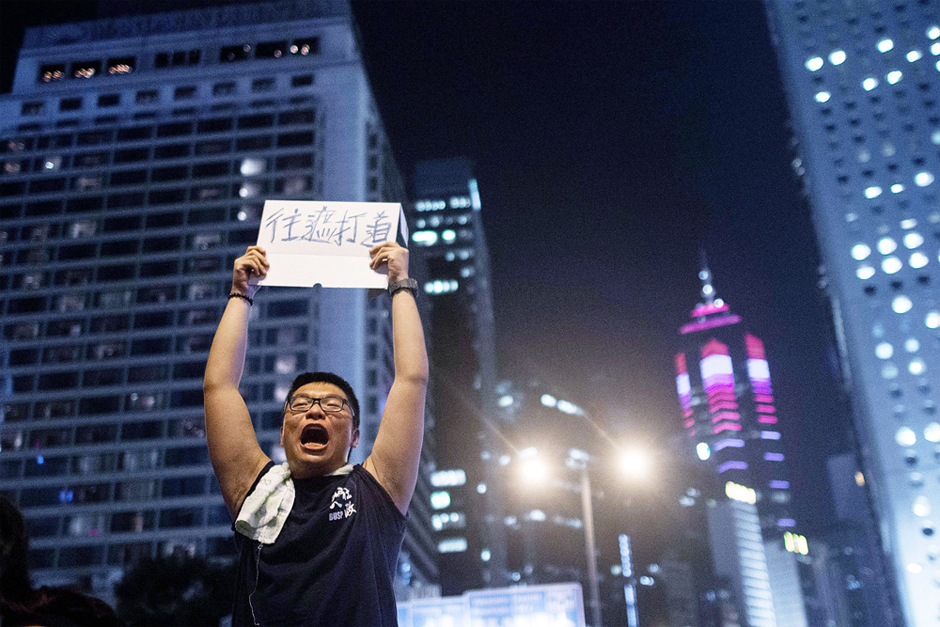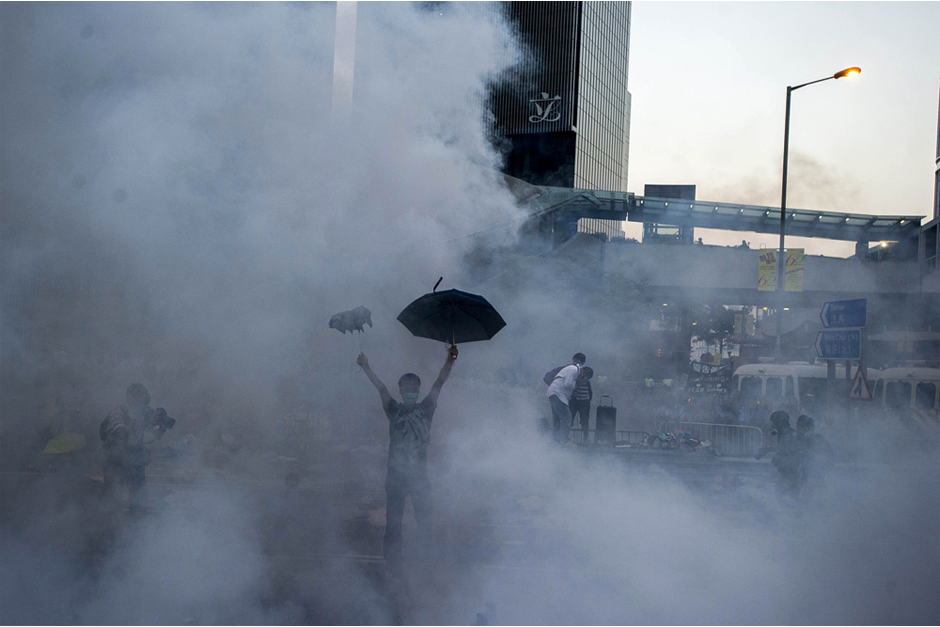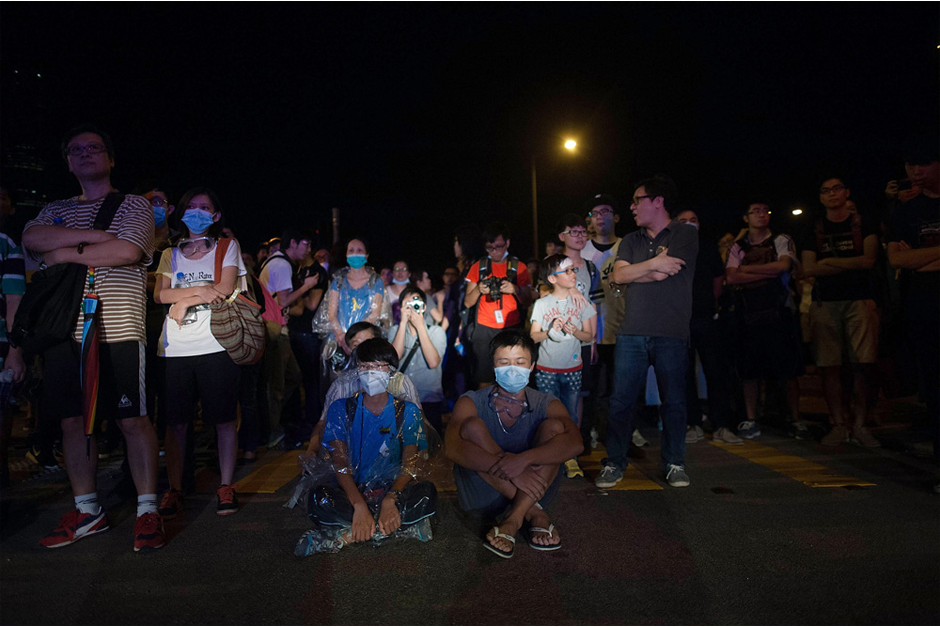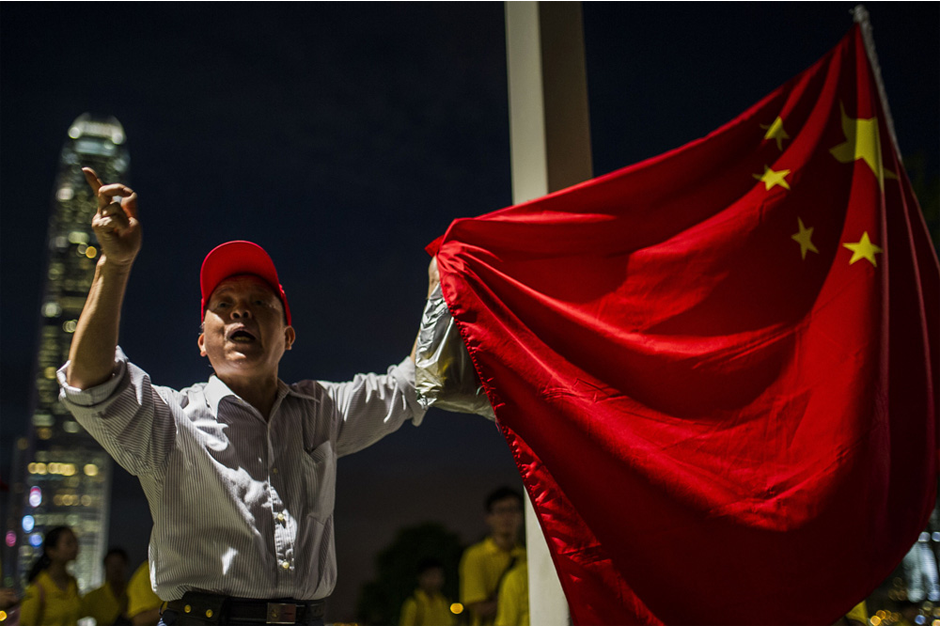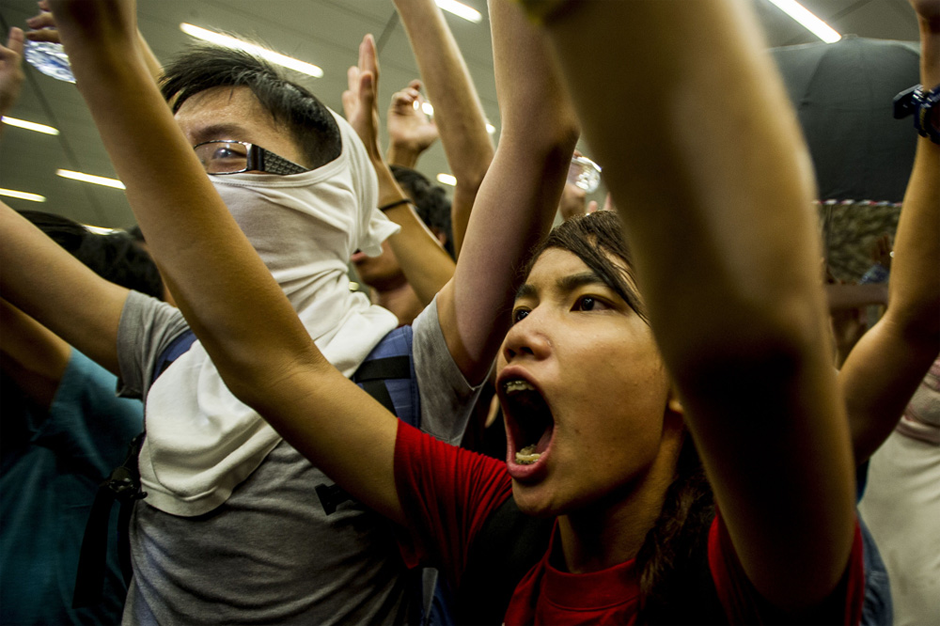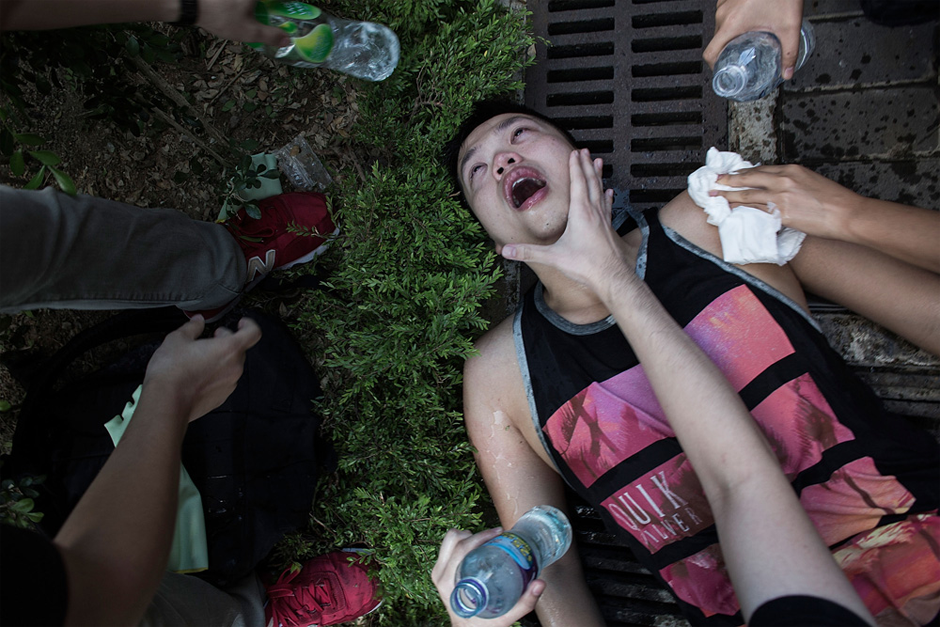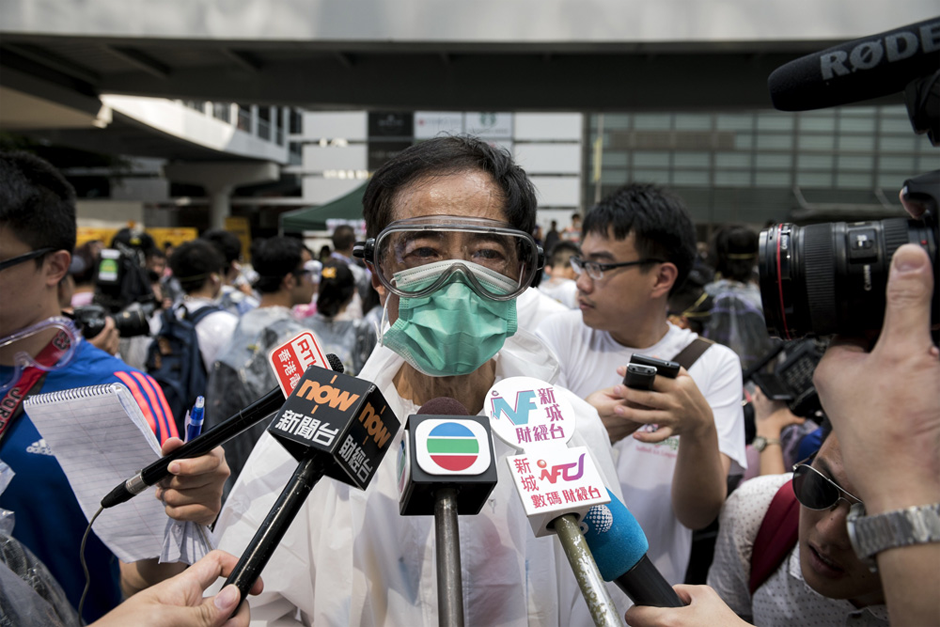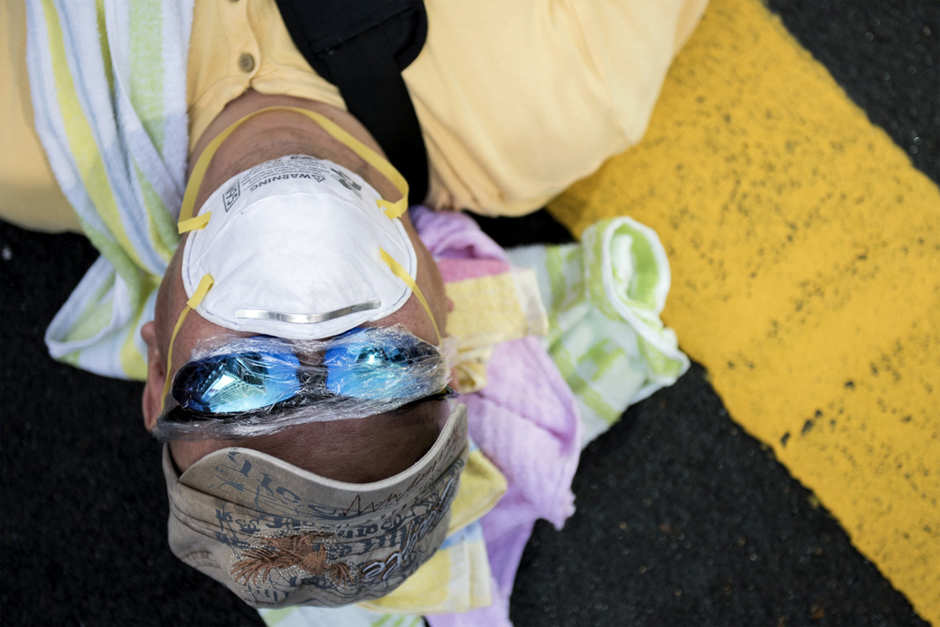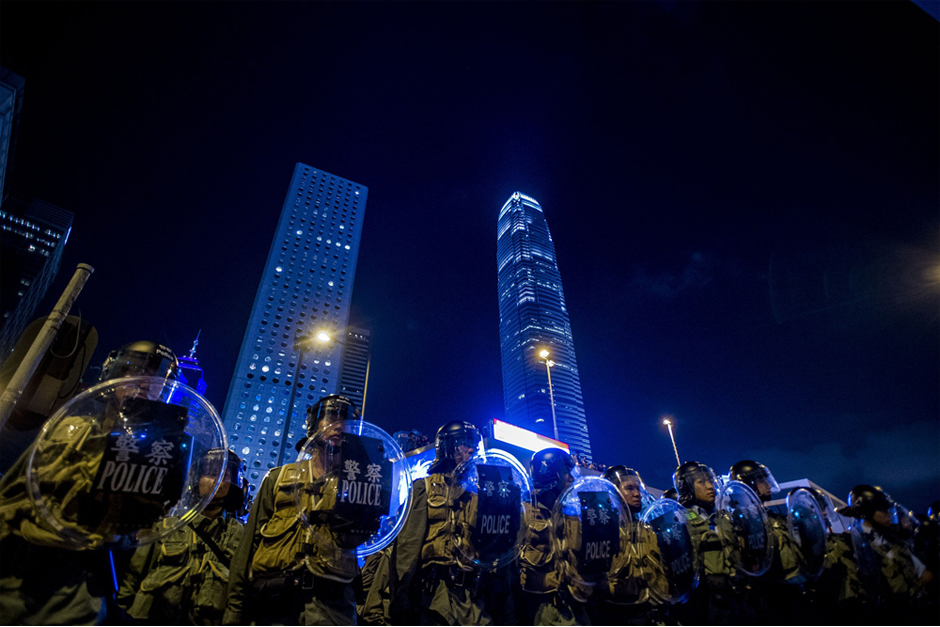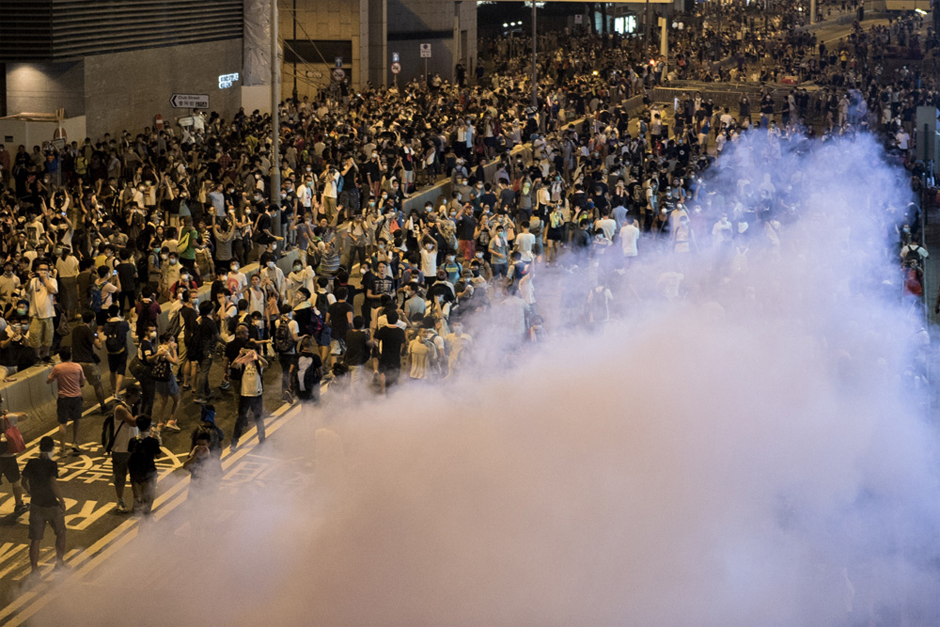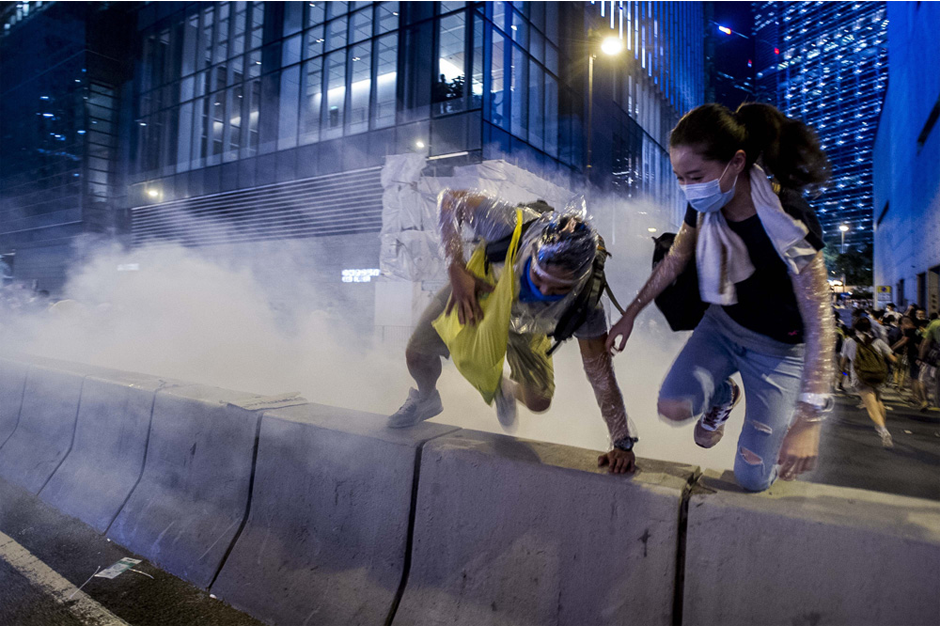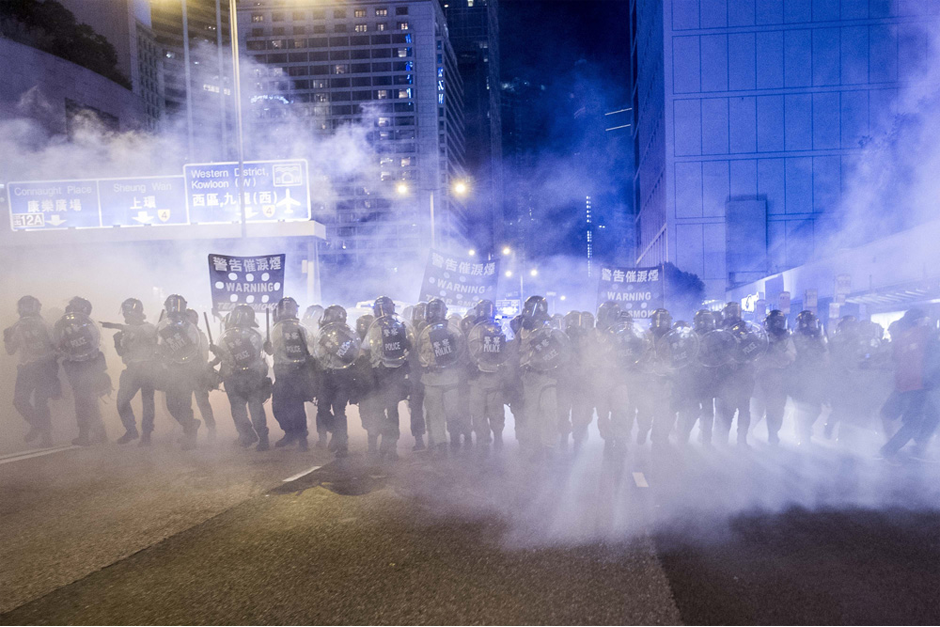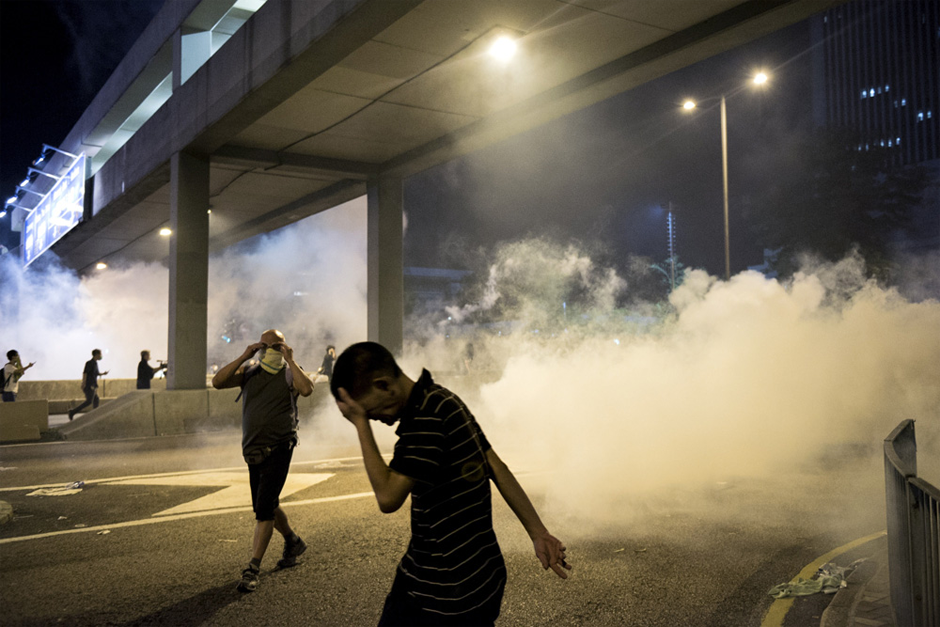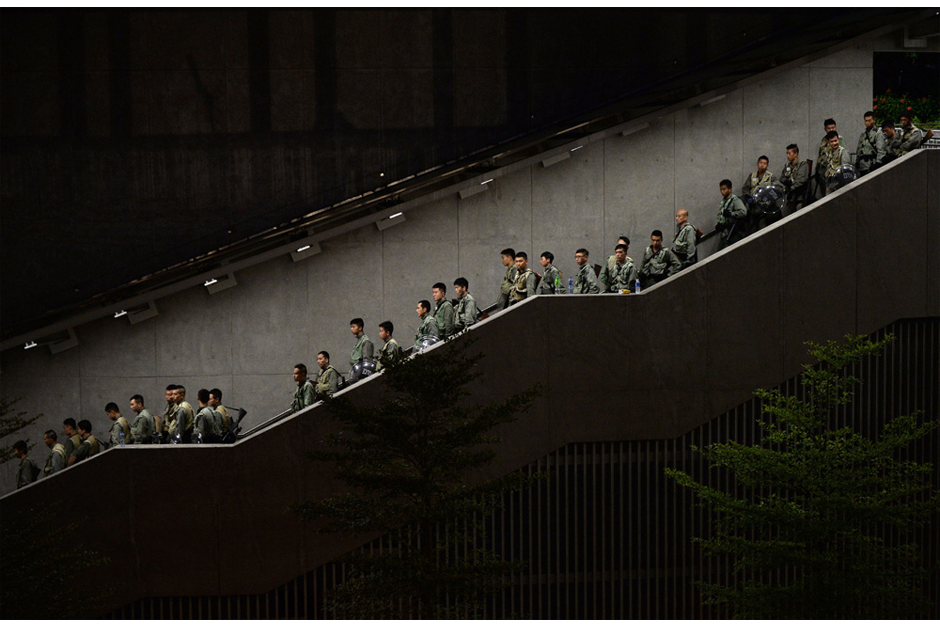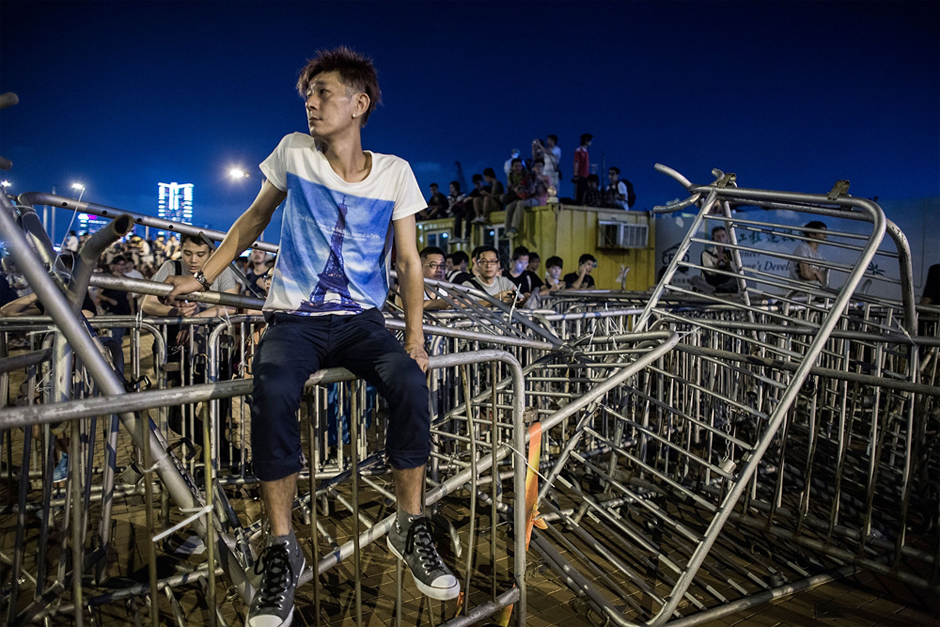Down on the streets occupied by the striking students, the city feels new: roads normally accessible only on wheels look like familiar strangers when suddenly you can walk down them. Big, immovable concrete partitions still separate the lanes, and the students have set up wooden steps here and there, with signs that say “crossing point,” so you can climb over.
When the rain pours violently down, some of the protesters take refuge inside the short, steep tunnel that cuts through Connaught Road, a large multi-lane artery which normally takes you towards the ferry piers in no time at all. Years of speeding cars have blackened it with soot, yet now strikers sleep here. They spread thin plastic sheets on the ground and lie down, each of them with a black t-shirt and a yellow ribbon, faithful to the name they are making for themselves of being “the most orderly protesters in the world.”
This is nothing new. Protests in Hong Kong have been nearly exclusively polite and law abiding for decades (a minor scuffle broke out earlier this year in front of the Legislative Council). When Edward Snowden came to hide in Hong Kong and his revelation of a vast surveillance program initially made him quite popular, a small group of demonstrators supporting him chanted, “No spying, please!” and bowed to the U.S. consular representative who received their petition letter.
Daytime, and people leave—some go to school, some go to work, some go to take a shower. Yeewan Koon, who teaches art history at Hong Kong University, tells me, “One of my students spent the night in the streets, went back to the halls, took a shower, and came to class.[The student] taped the lesson and was planning to share it with some classmates who are also boycotting; Something to do while they are sitting there.”
Others busy themselves as volunteers. Claire, a 22-year-old biology student dressed in the obligatory black, hands out tissues from behind a stack of cardboard boxes. “I feel it is my responsibility to be here,” she says, with the broadest smile. “If we do not fight for democracy for Hong Kong, who will?” The tissues, like the dry biscuits, the umbrellas, the plastic raincoats, the bottled water, all come from supporters who come carrying them and are greeted by cheerful applause. A few drops of rain come down, and a young woman hands out little plastic Ziploc bags, and says “it is to protect your phone when it rains.” The Umbrella Revolution would not even have started without smartphones, of course, so it is necessary to keep them dry—and charged, which can be taken care of at charging stations arranged along the route of the protests. It is all so organized, and yet, there are no real organizers: the Hong Kong Federation of Students (HKFS) is, in a sense, but Ariel and Stephanie, both 18, two hotel management and tourism students, explain: “We are a team of friends. Ten of us, from our school, and we have not really contacted the HKFS: we just came,” they say in turn. Ariel says that to know what to bring and where to go she logs onto Golden, a forum where a large section is now devoted to the students’ movement. Stephanie swears by the Apple Daily website.
Then there are Ted, and Sam, and Leo. They are all in high school and are barely 17, and they sit down on the plastic sheets near Admiralty, on the flyover. They have been here for two nights and had never joined a protest before. “When I saw what the police were doing I got so angry. So I decided to join my friends and come here. You cannot shoot tear gas in Hong Kong. Not here,” says Leo. “It is unfair that the government attacks us Hong Kong people,” Ted echoes. “I am so angry, that I am going to stay and stay and stay. I do not know how long for.” Are they tired? “Yes!” Scared? “Very!” Sam interrupts: “It is the first time for us to demonstrate. And we only want the government to talk to us.” Of course, it is the biggest “only” there is: the same “only” of countless other demonstrators, who “only” want to be acknowledged and treated as interlocutors.
The city had been transformed. Near the Admiralty flyover, a sign attached to a tall office building, and which seems to dangle from Gisele Bundchen’s enormous boot sole on a billboard, insists that “Civic nominations [for electoral candidates] are non-negotiable.” The Cartier shop says the same. The words on a large Cathay Pacific billboard have been altered; instead of “Choose your Destination,” it now reads, “Choose your Government.”
Whatever comes next, this subversion of the usual meaning of roads and billboards and the place of cars and pedestrians already makes us rethink all that we see. The city in the past few years has changed so much. Commercial rents have skyrocketed, killing off small restaurants and independent businesses, turning Central district into an international airport duty free shopping mall. Now, for a few heady days, it has been repurposed: Gisele’s foot and Cartier “promote” civic nominations. A messy aesthetic of colorful umbrellas haphazardly thrown onto barricades competes with the luxury shops that have colonized Hong Kong. And the mainland shoppers for whom they were built now stare confused, conflicted maybe, in front of these unexpected umbrellas.




